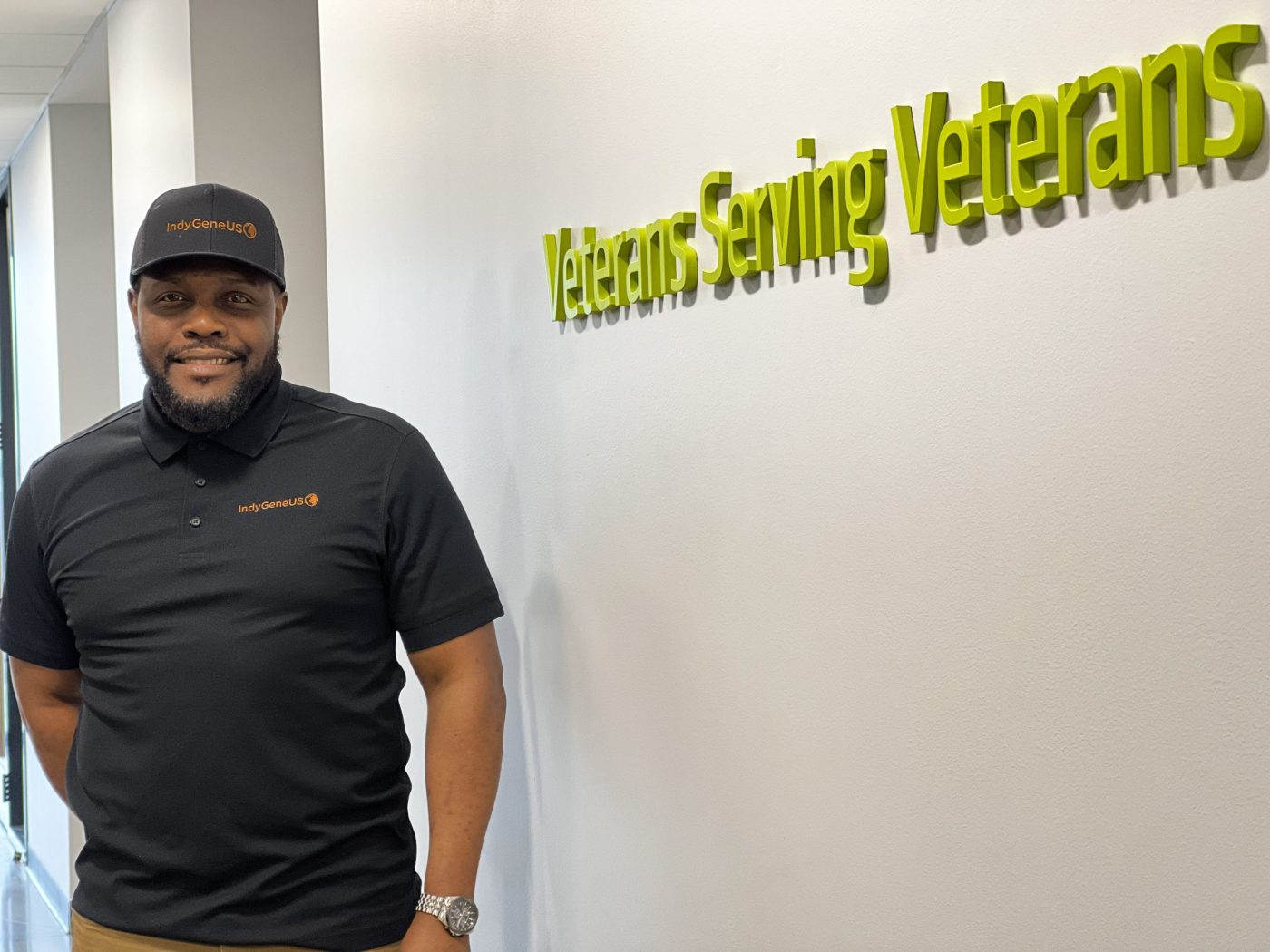Under the leadership of Secretary Shinseki we are making excellent progress advancing the breadth and effectiveness of our healthcare services to Veterans, including leading-edge treatment of traumatic brain injury, the use of telemedicine to reach more Veterans wherever they live, and a new mobile app that helps Veterans and their families manage PTSD, just to name three important examples. Our electronic health record (EHR) – VistA – is one of the reasons that VA continues to provide the best care anywhere; VHA Under Secretary Petzel and Assistant Secretary Baker know that to keep pace with the clinical services and the rapid changes in IT, we needed to find a way to unleash the innovation inside and outside VA that made VistA one of the best–if not the best– EHRs in the world.
So, after many months of engaging VA clinicians, sister agencies in government, and our development partners we determined that the fastest, safest, and most transparent way to accelerate progress was to establish an EHR community based on the terrific success that “open source” has enjoyed in other sectors. The new community is designed to actively engage the best minds among the users and developers of EHR software in both the public and private sectors and will ensure that VA clinicians have the best tools possible, and that Veterans have access to the best care that we can deliver.
The simple and powerful idea behind the open source EHR community is to provide an organized way for all kinds of companies and creative individuals–users, developers, service providers, researchers, universities, and even for-profit companies–to communicate, collaborate, and share. A central governing body, which we call the Custodial Agent (CA), sets up the ground rules and the infrastructure that enable interaction among the various–and sometimes competing–stakeholders. An effective CA makes it easy for the community to thrive and to achieve the innovations that are so important to VA and to the health care industry.
VA recently announced that we’ve taken a big step in the implementation of the open source software model for VistA: the selection of The Informatics Application Group (tiag), an innovative technology services company, to design and launch the Custodial Agent. Over the next several months, we will be working closely with tiag and their partners to create a Custodial Agent to provide structure for the community.
One of the primary functions of the CA is to take care of the EHR: to make sure that it is freely available (like it is today), that new components are compatible with the existing software, and that the open source software licenses promote innovation and access. To accomplish this, the CA will maintain a code repository that contains all of the software–the code VA uses as well as new components we may consider–and, importantly, is universally accessible. When new software is contributed for inclusion in the code repository, the CA will be responsible for making sure that it works with the existing code; we call this “certification”. Sometimes the CA will certify that new components simply plug in the right way, like when you download an app for your smartphone. Other times the developer will want to actually give the community the new module to make it part of the basic platform. Then the CA will certify that it performs according to the technical specifications before including it. And to make sure that the software is used fairly and properly, the CA ensures that the proper licenses are in place. Sounds very “legalese”, but this is one of the key things to get right when you set up a custodian. Remember, we want as many people as possible to use, develop, and test the code.
Providing clear and transparent communication is the core CA function–it’s vital to community operation. Everything from technical documentation to membership rules must be easily accessible. Not all of the information will come from the CA–in fact much of it may come from community members themselves. Feedback and community discussions will be encouraged and enabled with easy-to-use tools. A community website, online tools, and face-to-face meetings will ensure that stakeholders are well informed.
As we work with tiag to launch the Custodial Agent, it’s important to note some of the things that it doesn’t do: The CA doesn’t develop or market software. It doesn’t dictate the architecture or features of the EHR software. While tiag and their partners have expertise in VistA and open source software, the CA itself does not (and should not) contain a substantial fraction of the expertise in the ecosystem. The CA does not speak for VA, or for any other single user or developer. Effective operation of the CA, and the growth of the community it will enable, requires none of these things.
By focusing on accessibility, certification, and extension of the software, organization of technical activities, clear communication, community development, and good governance, the Custodial Agent will build a robust open source EHR community that will enable the rate of innovation required for VA to advance the care that we deliver to Veterans at the pace that they deserve. tiag, their partners, and VA are working hard to put this kind of strong, independent CA in place. Stay tuned over the next several months as the process unfolds.
Peter Levin is the Chief Technology Officer and a Senior Advisor to the Secretary at the U.S. Department of Veterans Affairs. Mike O’Neill is Senior Advisor to the Director of the VA Innovation Initiative (VAi2), Department of Veterans Affairs.
Topics in this story
More Stories
The Social Security Administration is hoping to make applying for Supplemental Security Income (SSI) a whole lot easier, announcing it will start offering online, streamlined applications for some applicants.
Yusuf Henriques, an Army Veteran and former combat medic, is the founder and CEO of IndyGeneUS AI, a genomics company on a mission to improve health equity by increasing representation of women and racial minorities in clinical trials.
Online shopping scams are the riskiest scam for Veterans, with 77.3% of reports confirmed losing money when targeted by this scam.







Experienced, savvy computer users who have used both open source and Micorsoft Products, favor open source software by a wide margin and for very good reasons. It is more than just the fact that open source is virtually virus free and more reliable than Microsoft, it is also about cost. I do not think Bill Gates and his associated companies need any more of the money which has been designated by congress to go to Veterans. Even more than this, tho, is the fact many open source operating systems can be “tried out” and ran live on the computer from the CDrom drive without installing it on the hard drive. If most of us could have “tried out” bad Micorsoft products such as Vista and Win ME, we would have never bought them, as Microsoft MUST be permanently installed on the hard drive to work. It is too slow and cumbersome to run via the optical drive like Linux Mint, Ubuntu, and many other open source operating systems.
In enterprise applications, Apache (open source) has a much bigger market share than Microsoft solutions for many, many good reasons. Computer users “in the know” favor open source over the Microsoft competition. Only in home computers, where Microsoft can capitalize on their superior marketing skills, does Microsoft enjoy the larger market share. The Pros “scoff” at Microsoft’s marketing efforts on their inferior products, as they are the ones who have to deal with the constant virii infections plaguing Microsoft systems. Open source is way more secure, and way less vulnerable to virus infection. If everything else was equal, the security alone would be enough to opt for open source. The VA has already paid 22 million because the laptops they had were easily compromised with Microsoft software. Its about time the VA learned this lesson.
Peter, I really hope you’re an innovative kind of guy.
I’M A DAILY USER of GUIs and command-line SCROLL and SCREAM VistA, CPRS, FBCS, GUIs and other apps.
So far, OPEN SOURCE means OPEN ANARCHY.
When VistA was invented, computers were mainframes guarded by men in white coats behind glass walls. And like the 64-K problem that continues to plague the PC-DOS family of OS’s, VistA’s developers (understandably) couldn’t see the future.
There’s no standardization in VistA and it’s GUIs. Sometimes a patient’s last and first names are separated by a comma, sometimes a comma and a space, sometimes no comma is allowed. Sometimes Social Security Numbers can have a dash, sometimes not.
Sometimes you can drag and drop into another screen or another app, sometimes you have to use the copy and paste icons.
It seems VistA was developed prior to the invention of relational databases, prior to Object Oriented Programming, before there was standards for interfaces and databases. VistA and Mumps were developed back in the day when Personal Computers were not even dreamed of, when “clients” and “users” approached the IT department with written requests, and got their GIGO output on reams of green paper the next day.
Peter, I hope your people are tireless dedicated and well-led. You’re taking on quite a challenge.
Good luck and God save us all.
“Open Source” software is probably one of the best ideas to come out of the VA in a long time. People who understand “open source” software know that Linux based (open source) software is thousands of times less likely to get a virus than Microsoft Products currently used. Also, some people may not understand that “open source” software is free.
Converting to open source is a wise move, good for the taxpayers, good for Veterans, and good for users as it is more reliable than Microsoft products. The only real loser is Microsoft.
I disagree, the real losers are veterans.
While open source has a lot of advantages, religion about anything technical is typically not a good idea. Open Source contrary to popular belief is not free. Most open source initiatives do not have the kind of development team and resources needed to create an enterprise class product. A few exceptions are Apache, Eclipse etc. However, even those projects had a lot of corporate backing and folks on pay roll to create those products.
In addition, when you use open source, you end up using a lot of consulting and support hours to plug the wholes or to add features that are important to your enterprise that have not as yet been addressed by the community. This costs money. The notion that open source is free is very misleading.
The VA has huge challenges in developing a new EHR. To do this, its going to need a combination of commercial enterprise software and open source tooling. The important thing here is to keep the veterans foremost in our minds. So for example, its not a good idea to try to scale an open source database in a shared nothing architecture. It maybe more cost effective to buy a commercial technology, and probably not a relational database. Something like MarkLogic, schema agnostic, massive scale, native XML based tooling and a SOA architecture would go a long way to immediately improving a veterans quality of care. Disclosure: I work for MarkLogic.
Great idea, we want need Doctors, your computer program will heal us of all our war injuries and diseases. What an innovative idea. Hope you get rich off of it. What happens when you have no electrical power or a virus?
This is an excitng first step toward moving VistA from being available via FOIA to becoming the center of a vibrant Open Source community. Many VistA and Open Source advocates are eagerly wating to see how VA and TAIG will be establishing governance for this community, and begin the “refactoring” process. There are many interested parties out here who are eager to participate and contribute.